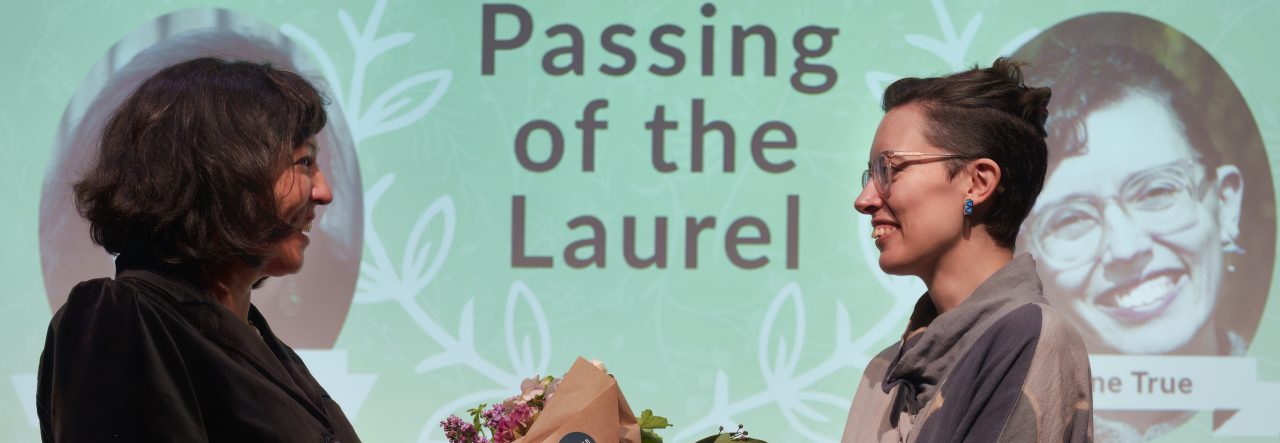I’ve just returned home after about a month abroad, mainly in Ireland. The country was, of course, green and hilly and rich with history, stunning scenery, moving mythical tales–so many stories and songs, a dense and beautiful texture. The ruins are emblematic and everywhere: a 6th century cathedral where St. Patrick chipped his tooth, a beehive of stacked stones on the Aran islands where monks slept, maybe hearing their God in the nearby ocean waves, and many, many miles of mended walls, piled rocks, those walls humanity so loves to build.
Ireland is, of course, a small country–about half the square mileage of Washington with about two and half million fewer inhabitants. It’s also an incredibly literary country: four Nobel Prize Laureates in Literature have come from Eire, only a few less than the United States. The art of story and the power of song are deeply enmeshed in the culture of the island and in the visible ways that literature is still alive: through the vibrant contemporary scene, through the ongoing recognition of the importance of the literary past, through the energy of song and music in pubs, and through public displays that celebrate the art.
For example, the poems in these images are from a poetry walk in Letterfrack–a small village right near the Connemara National Park; on the walk, you’ll find wonderful works by Theo Dorgan, Mary O’Malley, Paula Meehan (Chair in Poetry of Ireland), and, perhaps surprisingly, Michael D. Higgins, The President of Ireland. The. President. Of. Ireland. Higgins, by the way, is the author of several books of poetry, and as his writing clearly shows, he believes that his art is a place where he can express his ideology.
Visiting Ireland in 2016 meant that reminders of Easter Rising were ever-present: Ireland’s history is, of course, filled with bloodshed connected both to British rule and internal conflicts. I should mention that I also visited Belfast and Berlin (two places of walls and violence) for a few days, paid attention to the ongoing turmoil in Europe and here at home, and thought a lot about the relationship between poetry and communities, art and terror, words used carefully, craftily, and candidly (as well as words screamed with hatred and fury). Perhaps life should always be filled with this level of passionate intensity, but if that’s the case, then, to borrow language from Yeats, the polite meaningless words of our casual comedy don’t seem up to the task. We seem in a crucible, of sorts, or, to continue to borrow Yeats’s language, a troubled, living stream, and the words of the moment seem heavy with import: one misspoken phrase can make a stone of the heart.
Which means, I guess, that we should be careful with our words and attentive in our listening. I’ve seen and heard far too many election arguments gone ballistic, quarrels about guns and violence and gender and race within families–my own family–and among friends and neighbors that transform utterly the people involved. Meditating on W.H. Auden’s oft-quoted-out-of-context line–“For poetry makes nothing happen,” lines that were written in an elegy to W.B. Yeats during the madness of Europe just before the Second World War, Paula Meehan offers us something to think about, “But, maybe, we might read that ‘nothing’ as a positive thing. If poetry makes nothing happen, maybe it stops something happening, stops time, takes our breath away . . . Maybe it’s like the negative space in a painting by which what is there is revealed.” That is, taking a breath–being made breathless–isn’t necessarily a negative: grand scenery and rich history and those moments when the world stuns us can all trigger this response, this hesitancy, a pause, the uncertain moment that leads to renewed careful attention, perhaps even revelation of what might not have been heard or seen otherwise.











